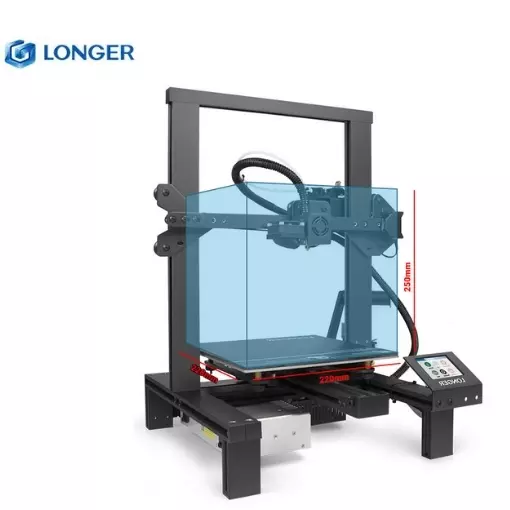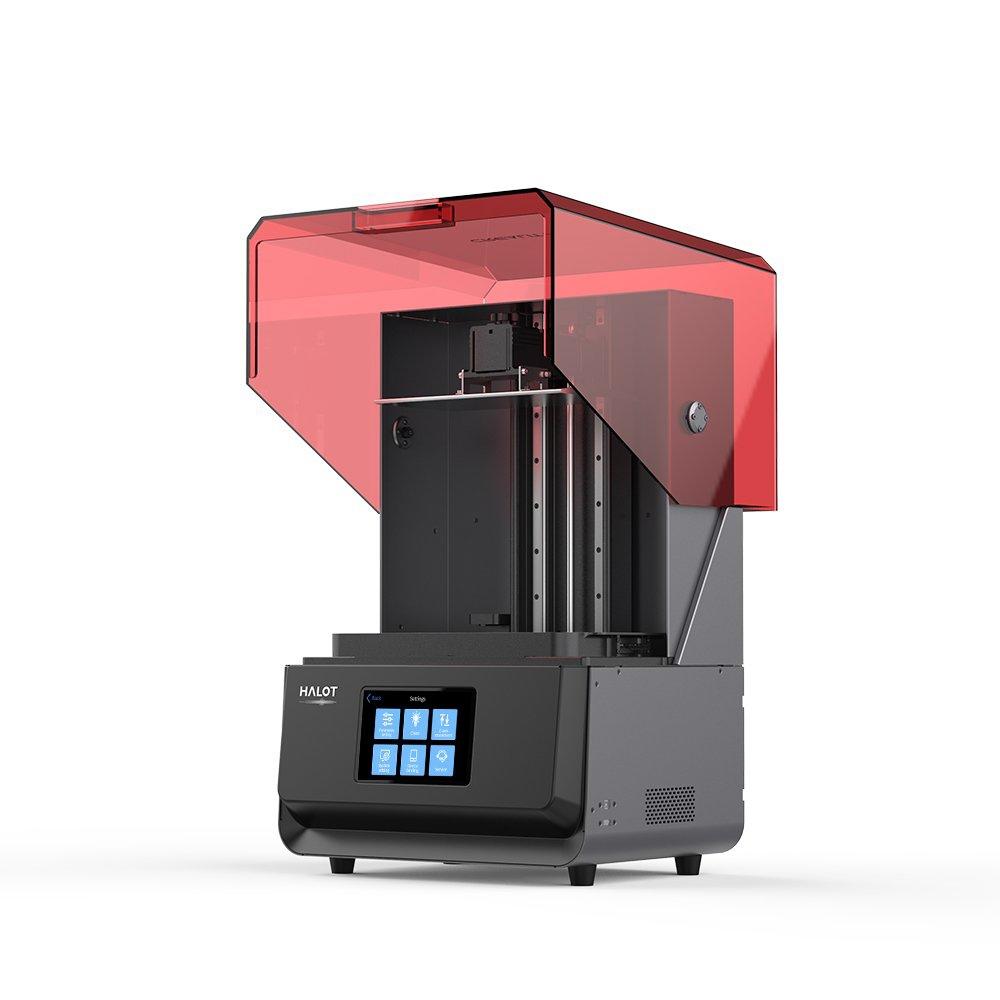Compare LK4 vs Halot Max
Comparison between the best 3D printers
Choose the best 3D printer at the best price. The cheapest 3D printers are here.
Buy a 3D printer here with 3D Fila.
 |
 |
|
| Model | LK4 |
Halot Max[BUY Halot Max] |
| Printing Material | Filament | Resin |
| Buy Filament for Longer 3D LK4 | Buy Resin forCreality 3D Halot Max | |
| Estimated price | $200,00 | $3000,00 |
| Manufacturer | Longer 3D | Creality 3D |
| Release Year | 2019 | 2021 |
| Print Volume [mm] | 220x220x250 | 293x165x300 |
| Printer Size [mm] | 402x425x505 | 480x387x770 |
| Weight [kg] | 7,8 | 32,5 |
| Power Loss Recovery | YES | NO |
| Maximum Resolution [mm] | 0,1 | 0,03 |
| Processor | 8 bits | |
| Display | Touchscreen TFT 2,8'' | Display touchscreen 5'' |
| Power Supply | 12V / 360W | |
| Connectivity | SD / USB | SD / USB / Wi-Fi |
| Operating systems | Windows, Mac, Linux | Windows, Mac, Linux |
| Date of registration in the system | 2021-04-15 | 2022-11-04 |
| Release date | 2019 | 2021 |
| Extra features | The Longer LK4 is a versatile 3D printer capable of working with a wide range of filaments, such as PLA, ABS, TPU, copper, wood and carbon fiber, thanks to its 0.4mm nozzle and heated bed up to 110°C. With a printing accuracy of between 0.05-0.4mm, it stands out for its solid construction with an aluminum frame, weighing around 7kg, and a robust 24V and 15A power supply. The kit includes an Allen key, a 7/10 key, a microSD card with USB adapter, a spatula, cable ties, a power cable, 5m of filament and a spare filament end sensor. Assembly is simplified, with around 90% of the equipment pre-assembled, and detailed instructions assist in the process. Special features include print recovery after power failure, a filament end sensor, a super-adhesive printing surface and an intuitive color touchscreen display. The design features smooth profiles for easy assembly, and the position of the filament holder optimizes the filament path to the extruder. The LK4 is a solid choice for 3D printing enthusiasts looking for quality and versatility. | The Halot Max printer stands out for its large print size (293 x 165 x 300 mm) and uses SLA technology. It has an integral light source for improved accuracy and a strong core with an advanced operating system. Its Z-axis module ensures high precision, supported by efficient slicing software. The machine offers online OTA updates and boasts an adjustable layer thickness between 10 and 200 microns. Its XY-axis resolution is 3840*2160, with 0.05 mm accuracy, and an integral 405nm light source. The printer includes a 5" touchscreen and multiple connectivity options, such as USB, Creality Cloud, and HALOT BOX WiFi. With cutting-edge technology, the Halot Max is ideal for printing small models with uniform precision, thanks to its self-developed lighting system and stable printing mechanism, which includes dual linear guides, ball screws, and an intelligent brake system. |
| Support for multiple colors and materials (AMS and CFS) | NO | NO |
Notes * |
||
| Cost-benefit | 7 / 10 | 5 / 10 |
| Hardware | 2 / 10 | 1.2 / 10 |
| Tela | . | . |
| Print volume | 3 / 10 | 3 / 10 |
| Performance | 1 / 10 | 9 / 10 |
| [BUY Halot Max] |
Conclusion |
| In conclusion, the comparison between the Longer 3D LK4 and the Creality 3D Halot Max highlights the distinct advantages and trade-offs of each printer for potential users. The Longer LK4, priced significantly lower, presents itself as a solid entry-level option with impressive versatility, supporting a range of filament types and offering essential features such as power loss recovery and a simple assembly process. Its smaller size and lightweight design make it an excellent choice for hobbyists or those new to 3D printing who are seeking a budget-friendly solution without compromising too much on quality. Conversely, the Halot Max, while considerably more expensive, wraps advanced technology within its larger build volume, making it a clear choice for professionals or serious enthusiasts focused on precision and efficiency. Its SLA printing capabilities and high-resolution output cater to detailed models, supported by robust connectivity options and an efficient operating system. However, the lack of power loss recovery may be a downside for some users. Ultimately, the decision between the two printers largely hinges on individual needs. Those prioritizing cost and general functionality may find the LK4 ideal, whereas users who require higher precision and performance for professional applications may justify the investment in the Halot Max. Balancing features, print quality, and budget considerations is key in determining the best 3D printer for specific requirements. |

